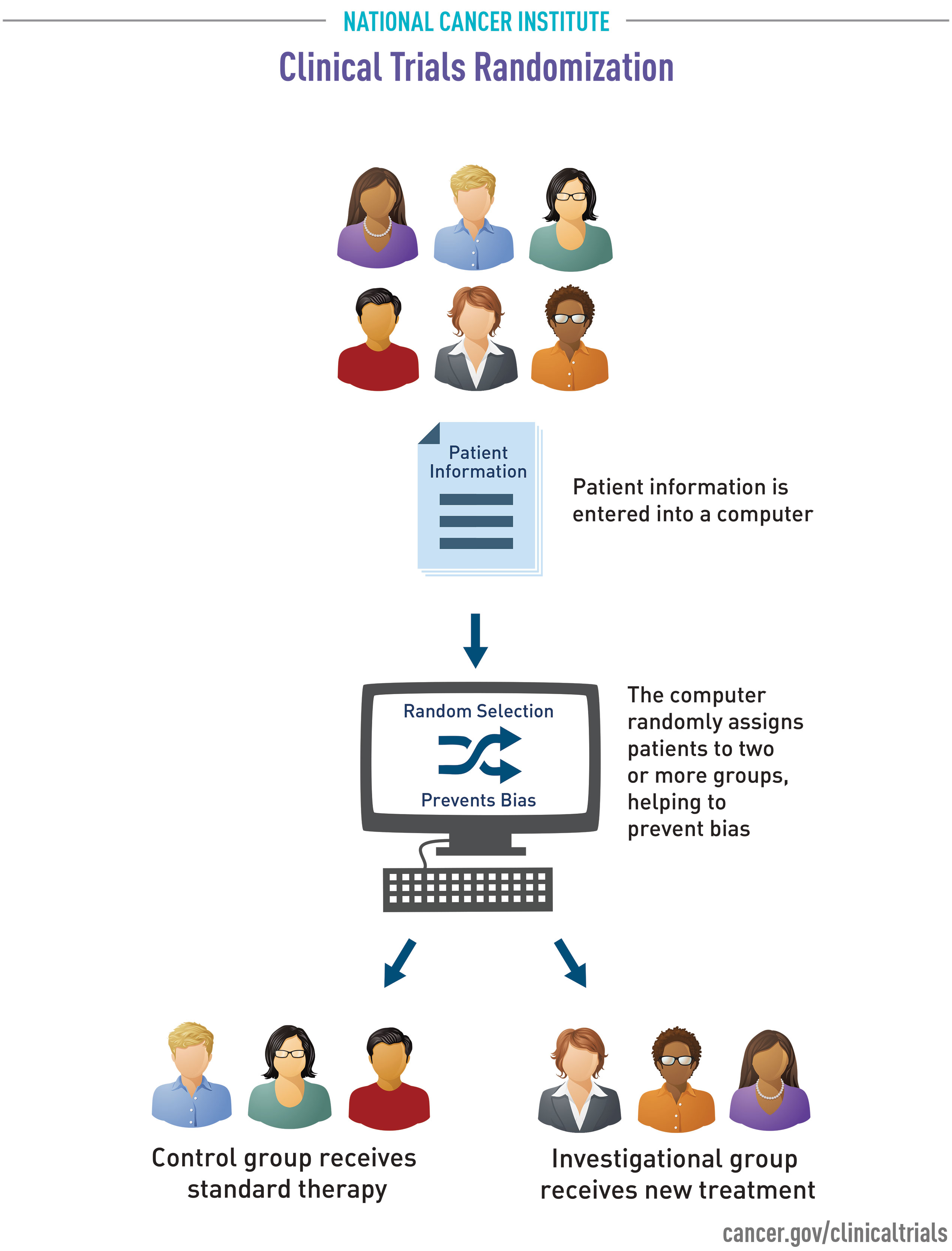How Are Patients Randomized to Cancer Clinical Trials?
Before any new treatment or approach is used with people in clinical trials, researchers work to understand its effects on cancer cells in the lab and in animals. Researchers design cancer clinical trials to test new ways to treat, detect, diagnose, and prevent cancer, and manage symptoms of cancer and side effects from treatment.
Clinical trial randomization is the process of assigning patients by chance to groups that receive different treatments. In the simplest trial design, the investigational group receives the new treatment and the control group receives standard therapy. At several points during and at the end of a clinical trial, researchers compare the groups to see which treatment is more effective or has fewer side effects.
Randomization helps prevent bias, which could occur when a trial’s results are affected by human choices or other factors not related to the treatment being tested.
Clinical trials are key to making progress against cancer. When you encourage your patients to take part in a clinical trial, you add to existing knowledge about cancer and help improve cancer care and quality of life for future patients. Find National Cancer Institute-supported clinical trials by searching the website (http://www.cancer.gov/about-cancer/treatment/clinical-trials/search).

